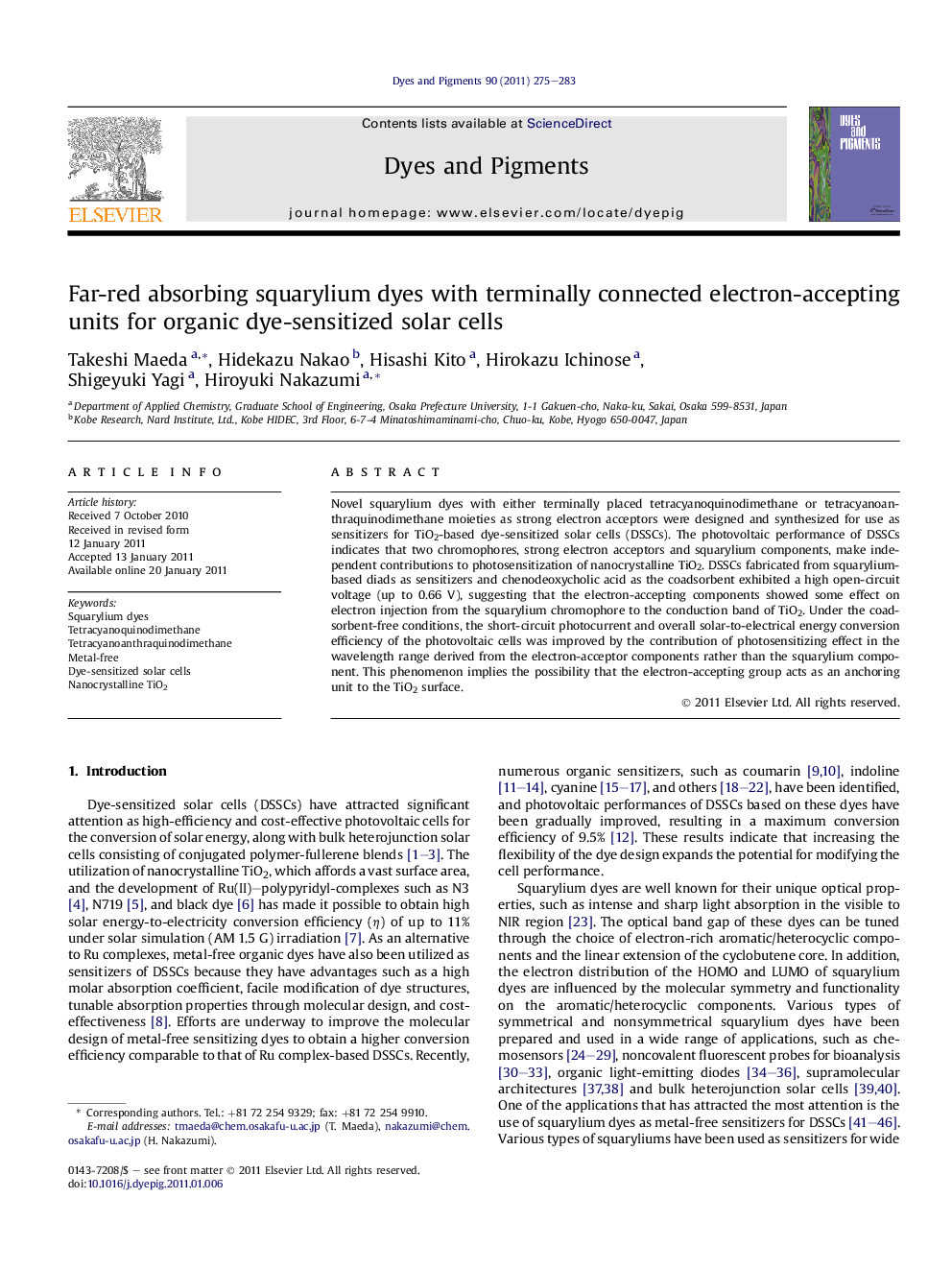| Article ID | Journal | Published Year | Pages | File Type |
|---|---|---|---|---|
| 177096 | Dyes and Pigments | 2011 | 9 Pages |
Novel squarylium dyes with either terminally placed tetracyanoquinodimethane or tetracyanoanthraquinodimethane moieties as strong electron acceptors were designed and synthesized for use as sensitizers for TiO2-based dye-sensitized solar cells (DSSCs). The photovoltaic performance of DSSCs indicates that two chromophores, strong electron acceptors and squarylium components, make independent contributions to photosensitization of nanocrystalline TiO2. DSSCs fabricated from squarylium-based diads as sensitizers and chenodeoxycholic acid as the coadsorbent exhibited a high open-circuit voltage (up to 0.66 V), suggesting that the electron-accepting components showed some effect on electron injection from the squarylium chromophore to the conduction band of TiO2. Under the coadsorbent-free conditions, the short-circuit photocurrent and overall solar-to-electrical energy conversion efficiency of the photovoltaic cells was improved by the contribution of photosensitizing effect in the wavelength range derived from the electron-acceptor components rather than the squarylium component. This phenomenon implies the possibility that the electron-accepting group acts as an anchoring unit to the TiO2 surface.
Research highlights► We synthesized squaraines bearing electron acceptors such as TCNQ and TCAQ. ► DSSCs based on squaraine-TCAQ diads exhibited high Voc value. ► The performance of DSSCs was attributed to independent contributions from TCAQ and squaraines.
